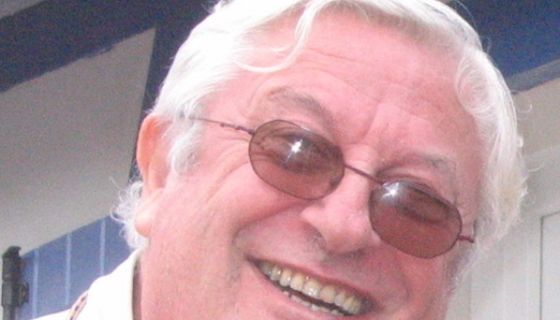My father was a whisky drinker (usually with orange juice!) and my mother never really drank alcohol at all and when I was old enough to drink legally, I spent my days exploring the Free Houses in north London drinking warm ales of different provenance. This all changed when, after qualifying as a Chartered Accountant, I went to work for Price Waterhouse in Milan. It was there where I discovered wine. In 1960, most of the Barberas available on the market were cheap and nasty. Nay, cheap and VERY nasty. I remember being sick after inviting my manager and his wife to my flat for dinner and plying them with this stuff which was probably made from ox blood and the scrapings off the bottom of a banana boat. I did also discover, however a more palatable white called “Est! Est! Est!” having been initially fascinated by the name.
But the real breakthrough on wine came was when I was sent as part of a team to do the audit of the Castello di Brolio in Tuscany, then owned by ex-King Peter of Yugoslavia and considered to be the finest estates in Chianti at the time. You could tell it was posh, because the wine was in bottles, rather than those bulbous fiaschi in a wicker basket which all other Chiantis seemed to be in.
Naturally we were extremely well looked after by the management (King was absent, of course) to make sure we would give a good audit report and the wines were very good indeed. One evening the Cellar Manager took us down to the cellars to choose a wine for dinner and additionally we brought up an 1894 vintage bottle. Needless to say that on opening it, it turned out to be pure vinegar! This is probably where I first learned to trust older vintages for investment purposes only!
Back to Milan and my wine knowledge was increasing by the day. Apart from a great affection for Punt e Mes (which I harbour to this day) I graduated from Barbera to Barolo which knocked me cold. I remember being introduced to Monprivato from Guiseppe Mascarello, the vintage escapes me now but it must have been one in the early ‘fifties, a deep, heady experience at a New Year’s Eve party where I went around wishing everybody buon ano instead of buon anno, to the collective mirth of my Italian colleagues.
Returning to England with a Franco-Italian wife (who turned out to be not a bad amateur cook) and finding Italian wines a bit hard to come by, I invested in a book called “Wine” by a young man called Hugh Johnson. If anything, that book became more influential in my appreciation of wine that drinking the stuff itself. One anecdote always stands out for me in that book, is when he plied a bunch of French peasants with some Château Montrose (which he happened to have on him, of course) and observing the expression on their faces as they drank some decent wine for the first time in their lives!
This, André Simon and Saintsbury got me heavily into Claret and I did fork out thirty shillings on a bottle of 1961 Calon-Ségur which I carefully preserved for a suitable occasion, but it got stolen amongst other possessions when my house was burgled. Some month later the Police called me to say that they had recovered some of my possessions but alas, the Calon-Ségur was not amongst them only some cheap plonk and a pair of dirty wellington boots. Obviously connoisseur thieves or maybe coppers?
I soon graduated on to Burgundy, Loire and Rhône and dinners at the Blech household became legendary amongst our friends, so much so that I said to my wife “Sonia darling, you can cook a bit – let’s open a restaurant!” Which we did. But that’s another story and one day I’ll write a book about it and that will be the title.
So when we did open our first restaurant in the Wye Valley, we only listed French wines – after all, the cooking was French and my reckoning was “I know there are wines from other countries, but if we put those on the list – where will it all end?” One of the highlights of our time there was to have monthly French Regional dinners with local wines – I think they used to cost about £9 a head including a wine for each of five courses.
We returned to London for our children’s sake – we were 3 miles from the nearest bus stop – and opened Mijanou restaurant in 1980. Here I did expand the wine list, going to many wine merchant’s tastings and making lots of new discoveries. But it was a customer – a political journalist who frequently used our restaurant, which was just far enough away from the Houses of Parliament to be out of the lobby loop and yet near enough for MPs to get back in time to vote after eating dinner, who said to me “have you ever tried Californian wines?” At that time I hadn’t, but I soon did and later on when I founded The Wine Treasury I became one of the biggest importers of Californian wines in the UK. After that learning about Australian, New Zealand, South African and South American wines and visiting wineries there became a natural progression.
Today, I am beginning to appreciate wines from the former countries in the Soviet Union. Wines from Bulgaria, former Yugoslavia, Hungary have improved so much although I haven’t quite got to grips yet with Georgian wines made in clay pots or “natural“ wines (a misnomer if there ever was one). It’s a never-ending journey in the world of wine – a learning curve that’s going on forever. My only regret now is that because of my cancer, my oncologist has allowed me only two glasses a day, but he hasn’t specified the size of the glass!













